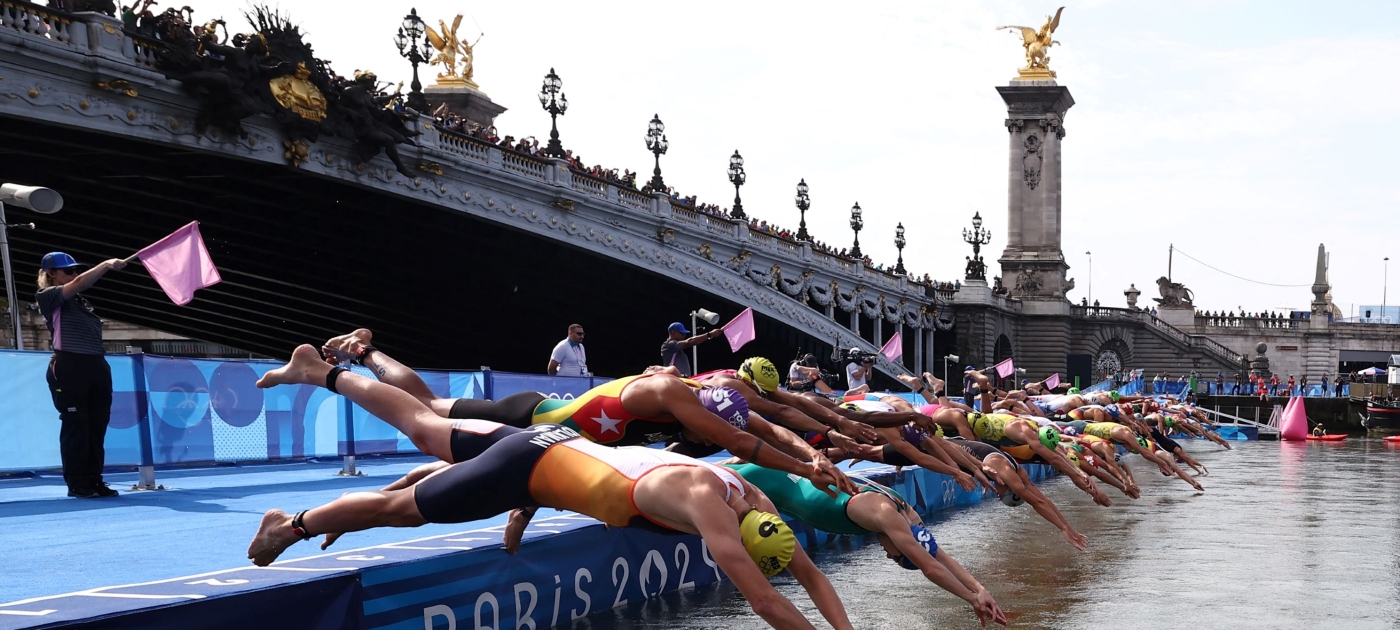Seine Success: A Beacon of Hope for the World's Troubled Rivers

As swimmers return to the River Seine, experts see a glimmer of hope for other polluted waterways around the globe. The revitalisation of this iconic Parisian river, once a symbol of urban blight, is a testament to the potential for reversing decades of environmental degradation.
"Paris has demonstrated that even the most polluted rivers can be brought back to life," remarked Dianna Kopansky, Head of the Freshwater and Wetlands Unit at the United Nations Environment Programme (UNEP). "However, to avert a looming freshwater crisis, the world needs many more success stories like this."
A recent compilation of UNEP reports revealed that half of all nations currently face water-related ecosystem degradation. This encompasses rivers, lakes, wetlands, and aquifers, which are either polluted or suffering from low water levels. The report aligns with the UN Sustainable Development Goal (SDG) 6, which aims to ensure access to clean water and sanitation for everyone by 2030.
The deterioration of freshwater bodies has had a profound impact on communities worldwide, jeopardising drinking water supplies, risking food shortages, and hindering hydroelectric production. By 2025, an estimated 1.8 billion people are projected to experience absolute water scarcity, with two-thirds of the global population facing water stress.
While urban areas have long grappled with water pollution, from the leaded pipes of ancient Rome to the infamous "Great Stink" on London's Thames River in the 1850s, the UNEP reports highlight the possibility of reversing these trends.
Experts stress the need for nations to prioritise the protection and restoration of degraded ecosystems in their policies and plans. They also advocate for a holistic approach, tackling pollution and climate change simultaneously. Maintaining the connectivity of freshwater ecosystems is crucial for their long-term health.
Many countries have begun to embrace these principles, revitalising some of the world's most renowned waterways. India has embarked on a US$4 billion initiative to clean the heavily polluted Ganges River, while London, relying on a 150-year-old leak-prone sewer system, has invested in constructing a 25-kilometre "Super Sewer." The Hudson River, bordering New York City, is showing signs of recovery after decades of chemical contamination cleanup efforts. Last year, dozens of nations launched the Freshwater Challenge, a major restoration initiative aimed at reviving 300,000 kilometres of rivers and 350 million hectares of wetlands.
The Seine cleanup, now in its ninth year, stands out as an ambitious project. French officials have installed thousands of kilometres of pipes and a network of underground pumps and tanks to prevent untreated sewage and rainwater from entering the river. Regular ambient water quality monitoring has played a key role in maintaining progress and ensuring water safety. This underscores the importance of citizen science, which UNEP encourages countries to incorporate into their national monitoring programmes.
This summer, ultramarathoner and clean water advocate Mina Guli completed a 30-day, 830-kilometre run along the Seine River, ahead of the 2024 Olympic Games. This feat aimed to raise awareness about the looming water crisis and the urgent need for river restoration.
"For too long, we have undervalued and overlooked our rivers, treating them as little more than pipes for water and overflows for sewage," stated Guli. "Healthy rivers are crucial for water and food security, reversing nature loss, adapting to the escalating impacts of climate change, and driving sustainable development."
Guli, who is currently planning a campaign to run along 20 rivers across six continents, is leading a UNEP-organised event this week at Stockholm's World Water Week, a global forum dedicated to freshwater-related issues. The Seine's revival serves as a beacon of hope, reminding us that with concerted effort and a holistic approach, we can restore our precious waterways for generations to come.





